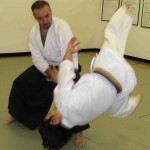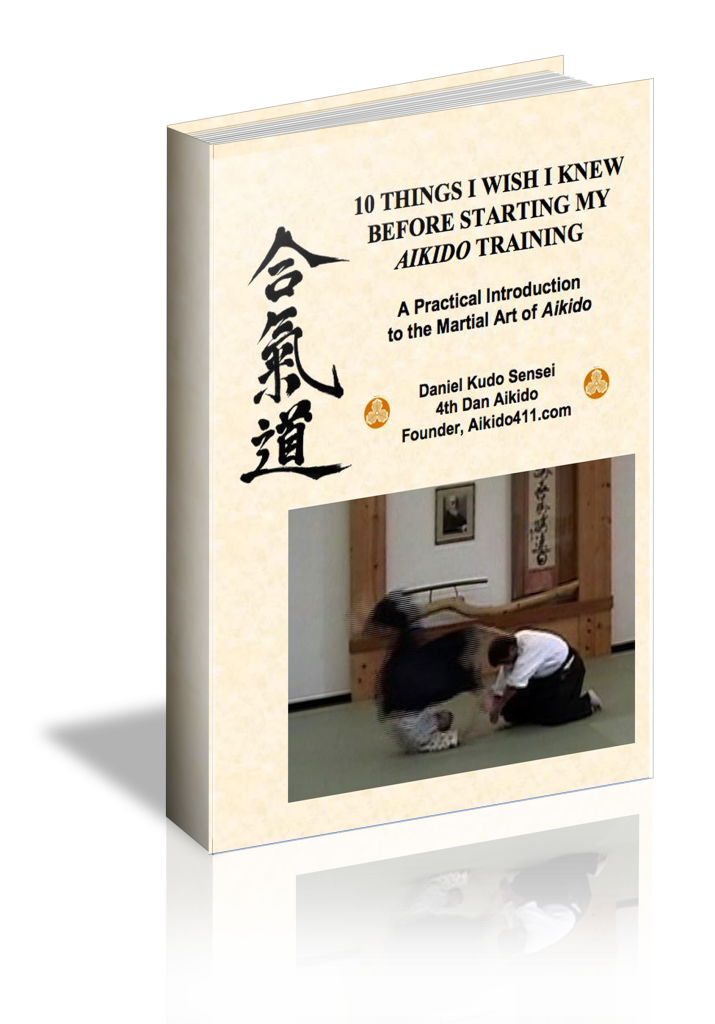Aikido techniques: Kokyunage (“Close enough to kiss????”) – Part 2
So are we likely to use kissing in Aikido techniques? Of course, the answer is NO (unless, of course, your uke happens to be your spouse). So if we are actually not kissing, then how to we apply the concept of “close enough to kiss”?

Aikido Techniques: Sumi Otoshi
Aikido Techniques – Distance versus Power
Maximum power can be generated and transmitted when centers are in close proximity. Try this experiment. Stand at arms length from uke. Reach across and try to move uke (who is standing with one-point, or centered) by placing the palm of your hand on uke’s shoulder and pushing side ways. If, on the other hand, you bear hug your partner you will find that it is much easier to move your partner from side to side. Why??? This is because your centers are, for all intents and purposes, joined together and any movement of your center is transmitted directly and efficiently to uke’s center.
What is close enough? For the classic kokyunage we teach nage to bring uke’s head to our collarbone to physically join uke to us. Once body is attached to our, uke’s head tasked with the responsibility of trying to overcome the force generated by the weight and momentum of nage’s whole body. This, of course, is a losing battle for uke. The concept of “close enough to kiss” is the way to illustrate the concept of joining both centers in a way that is humorous enough to be easily remembered. I will often stop my students as they are trying to execute the Aikido technique of kokyu nage to observe the proximity of the centers. Asking the student if they are close enough to kiss (without kissing), nage can evaluate the proximity of their centers. The throw is accomplished using the whole body rather than the arms alone.
Aikido Techniques – What I thought I saw –
When we see some spectacular throws in the movies what we see is one of the most frequently confused issues associated with beginning or intermediate Aikido students. This is the natural desire to use the upper body strength to execute the throw which has been engrained in us since childhood encounters in the sandbox. To reinforce the concept I ask nage if they are “close enough to kiss” (to illustrate the proximity of centers), and to hold the head next to the body as they” open the door” by stepping backward and out of the way in order to execute the throw which is accomplished by dropping the center. Because uke’s head is connected to the nage’s body and not able to overcome the force of nage’s whole body dropping, uke’s body follow their head downward. We can then be certain that the body has, in fact, generated the power to throw uke.. In summary, the concept of blending or harmonization is key to the effectiveness of controlling the centers of the uke. This concept of “close enough to kiss” can help the student internalize this idea as they learn Aikido techniques.

Leave a Reply